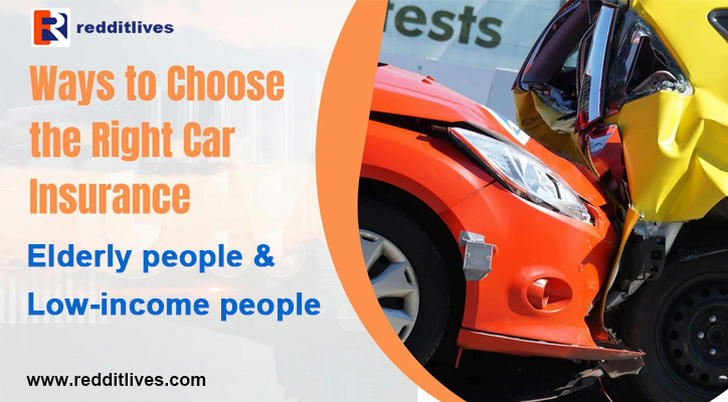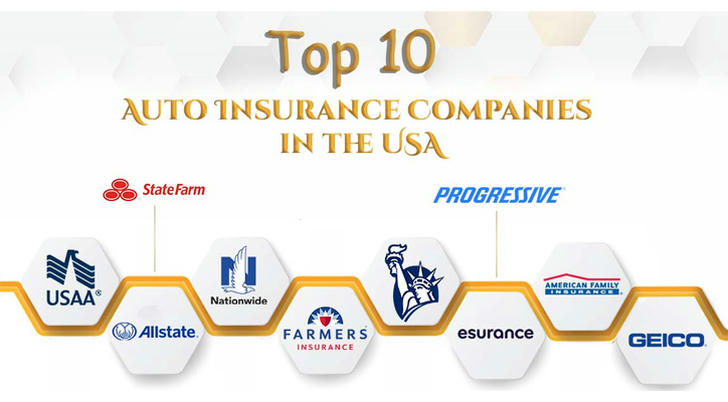🚘 Auto Insurance: Protection for Low-Income & Senior Citizens
🚩 Car Insurance | Government Support | Well-Known Insurance Companies
As living costs rise, many American families are looking for affordable car insurance options. Young drivers, homemakers, retirees, and low-income households often face budget constraints. Fortunately, several well-known insurance companies offer low-cost or budget-friendly plans, and some states also provide government-supported programs to ensure basic legal coverage.

🚘 What is Auto Insurance?
Auto insurance is a financial tool that helps protect drivers against financial loss from accidents, theft, or other damages. Depending on the type of coverage purchased, the insurance company pays for certain damages or injuries resulting from covered incidents.
✅ Benefits of Auto Insurance
- Financial Protection: Covers medical bills, vehicle repair costs, or third-party damages—preventing unexpected high expenses.
- Legal Compliance: Most U.S. states require drivers to carry at least basic liability insurance.
- Protection for All Parties: Liability coverage protects others; collision and comprehensive cover your own vehicle.
- Peace of Mind: Whether a minor fender-bender or major crash, insurance reduces stress and ensures you're supported.
📊 Age-Based Trends in Car Insurance
Car insurance needs and costs often vary by age. Here's a breakdown of how age groups typically interact with auto insurance:
| Age Group | Common Characteristics |
|---|---|
| 16–25 years old | Higher premiums due to inexperience; often require parental support or are added to family policies. |
| 26–40 years old | Begin to qualify for lower rates with clean driving records; often seek more comprehensive coverage. |
| 41–60 years old | Usually benefit from the best rates due to experience and stable driving habits. |
| 61+ years old | May receive senior discounts, but premiums can rise slightly due to health-related risk factors. |
👥 Who Needs Auto Insurance?
Auto insurance is essential for all drivers, but seniors often face unique challenges:
- May have limited income in retirement
- Might drive less and qualify for low-mileage discounts
- More likely to qualify for government assistance insurance programs in some states
➡️ Insurance providers and governments offer tailored plans to ensure seniors remain protected affordably.
💰 Car Insurance for Seniors and Low-Income Individuals
Government-supports auto insurance
🚗 California: Low-Cost Auto Insurance (CLCA)
- Who Qualifies: Income ≤ 250% of Federal Poverty Level (e.g., $78,000/year for a family of 4), good driving record, car value ≤ $25,000
- Annual Premium: $244–966, higher for drivers under 25
- Coverage:
- Bodily Injury: $10,000 per person / $20,000 per accident
- Property Damage: $3,000
- Optional Add-Ons: Medical (up to $1,000), Uninsured Motorist Injury ($10,000/$20,000)
- ❌ Does not cover collision or comprehensive damage to your own vehicle
🚗 New Jersey: Special Auto Insurance Policy (SAIP)
- Who Qualifies: Must be enrolled in Medicaid with hospitalization benefits
- Cost: $365/year ($1/day)
- Coverage:
- Emergency treatment after an accident
- Catastrophic injury care (up to $250,000)
- $10,000 death benefit
- ❌ No liability, collision, or property damage coverage
🚗 Hawaii: AABD Program (Aged, Blind, and Disabled)
- Who Qualifies: Receiving SSI, TANF, or AABD benefits; only registered owner of the vehicle
- Cost: Government assistance
- Coverage:
- Personal Injury Protection (PIP): At least $10,000
- Liability: $20,000/$40,000 for bodily injury, $10,000 for property damage
- 🚗 Vehicle Limit: One car per household unless for work or medical needs
🏢 Well-known auto insurance companies insurance plans offered
🚗 1. GEICO
Pros:
- Wide range of discounts (safe driver, student, military, bundle)
- Easy online quotes, claims, and account management
- Low-mileage discount programs
- Avg. premium: $66–75/month
🛡️ 2. State Farm
Pros:
- “Steer Clear” safe driving program for young/new drivers
- “Drive Safe & Save” app for premium discounts based on behavior
- Strong agent network for in-person service
- Premium range: $47–123/month
🪖 3. USAA (For Military Families Only)
Pros:
- Exclusive low rates for military and their families
- First-accident forgiveness
- Highly rated service and fast claims
- Premium discounts for stored vehicles
- Avg. premium: $33/month
🧾 General Eligibility Requirements
To qualify for basic or low-income-focused auto insurance, applicants typically must:
- Be 16+ years old with a valid driver’s license
- Own and register the vehicle in their name
- Maintain a good driving record
- Meet income guidelines (e.g., ≤ 250% Federal Poverty Level)
- For special plans (e.g., SAIP), be enrolled in Medicaid or other assistance programs
📄 How to Apply
Choose Your Program or Provider
- State assistance (e.g., CLCA, SAIP) → Visit official government websites
- Private insurers → Use online quote tools or visit a local agent
Prepare Documents
- Driver’s license, proof of income, vehicle registration, proof of residence
Apply Online or In-Person
- Follow state-specific instructions or use company application portals
❓ Frequently Asked Questions
Q: Can I get insurance if I’ve never had it before?
A: Yes, but premiums may be higher. Some programs (e.g., CLCA) accept first-time drivers with clean records.Q: What if I only drive occasionally?
A: Look for pay-per-mile programs (e.g., Allstate’s Milewise, Progressive’s Snapshot) for better savings.Q: Do seniors get special discounts?
A: Yes. Many providers offer senior safe driving discounts or low-mileage rewards.Q: Can I combine government help with private insurance?
A: Generally no. Government low-cost programs replace the need for private coverage, but you can switch plans later if needed.
🧾 An Insurance, A Peace of Mind
Auto insurance is essential—not just legally, but for your safety and financial well-being. Whether you are a senior, on a tight income, or need temporary relief, both state-supported programs and major private insurers offer accessible, affordable solutions tailored to your needs.

Resource: Low-cost car insurance
Resource: Low-cost car insurance
Resource: Low-cost car insurance
All information is collected from publicly available resources such as Apprenticeship.gov and local union training programs.
